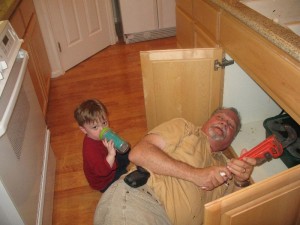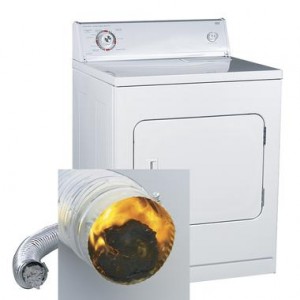Ten Fix-Its You Should NEVER Postpone
September 21, 2010
Filed under Blog
How Many Do You Pay Attention To?
Are you finding yourself too busy to pay attention to on-going home maintenance needs? Do you have someone to help you with those fix-its or do you just let them go hoping they’ll go away?
We all get busy at times, and forget that our house, apartment, or condo (whatever you call “home!”) continues to age. Here are Ten Fix-its that should always be on the top of your to-do lists to keep your home a healthy, safe environment for your family. Keep in mind, this list is in no particular order. Each item has its own importance, significance and value. (See our BONUS TIP below.)
1. Filters in air-conditioner and heating units

One should at least inspect the filter every 30 days and change it if necessary. If clean, check atleast every 45 days. If a central air conditioning and heating system is used regularly, the filter should be changed at least once a year.
2. Gutters
You should inspect and clear them spring and fall. Loosen dirt that has blown into gutters, and scrub them with stiff brush. Flush with a stream of water from the hose to clear lodged material. Consider having a mesh-screen or leaf catching system installed. If during inspection you find gutter leaks they will need to be repaired to prevent future damage to your siding and guttering systems. We would be happy to install the gutter guard for you or make necessary repairs!
3. Window caulking
As fall approaches and the weather starts to get cooler, it’s a good time to think about replacing the caulking around your windows. Last winter were any of your rooms drafty? Did the curtains move when the furnace wasn’t on? These are signs that your window caulking isn’t doing its job anymore and should be replaced. Fall is a good time to do this job, since caulking works best when it’s applied in temperatures between 50 and 70 degrees F.

Grandson Everest watching Papa John fix the sink!
4. Plumbing
Do you have leaky faucets? A constant drip in the shower or bath? These constant leaks take their toll on your home; it costs you in money (water usage goes up dramatically!) damages (leakage may also be occurring where you can’t see it) and the irritation factor (a constant drip can be incredibly annoying!). Sometimes a simple washer replacement or tightening of the parts of your faucet can be all it takes to solve the problem. DON’T wait. It won’t go away by itself!
5. Mold and mildew eradication
Mold needs a food source (dirt, for one!) a source of moisture and a place to grow.
Exposure to any mold could cause health effects (e.g., allergic symptoms, difficulty breathing, headache and fatigue) under the right conditions. It is important to make sure that the source of moisture is stopped before the mold is cleaned up. If this is not done, the mold will grow again. Mold needs to be cleaned up, and then prevented.
6. Electrical glitches

These “glitches” can include problems with light bulbs and fixtures, dead outlets, tripping-breakerproblems, and switch difficulties. For the most part, these are things that need professional intervention. Take notes when you notice the problems; i.e. when they occur, what appliances or fixtures are on at the time of the problem, how often it occurs and if you have noticed changes in your electrical bill.
7. Hot water heater maintenance
Most of us buy hot water heaters (or they come with our home!) and we ignore them until there is a problem! That in itself often creates problems. A few basics will keep your unit running efficiently, and will lengthen the life of your water heater. (Which is, by the way, about eight to 12 years.) Yearly maintenance is the key. Drain your water your water heater at least once a year to prolong its lifespan. Be sure your unit is equipped with a drip pan, and if your local laws require it, earthquake strapping. Sludge or sediment removal is a good idea too, as it builds up on the bottom of the unit and can prevent efficient operation.
8. Dryer vent maintenance

The exhaust tube at the back of your dryer vents to the outside. All hot, moist air coming out ofthe dryer is vented this way, and carries with it not only hot air, but lint and fluff from your clothing. This linty material collects in the lint trap, which is either in the front of your dryer door, or on top of the dryer. (KEEP that clean!) Some sediment and fluff gets past that trap, and goes into your venting tube. There are more than 15,000 dryer fires each year, caused almost exclusively by built up lint in the exhaust tube, or behind the dryer. A blocked vent can cost up to $20 a month in electricity! Not to mention many dryer motors burn up prematurely due to this blockage and build up!
9. Tub and Shower maintenance
Keep your tub and shower areas well vented – leaving glass doors or curtains open for a time, to insure air circulation. Maintain grout and sealants around the fixtures. Caulking should be replaced or renewed regularly, to prevent leaks. Make sure your shower head cuff is firmly attached to the wall, so no water can get behind it. Be sure all shower head fixtures are tightened and not leaking at the connection point to the piping. Remember, the goal is to prevent water from intruding behind the enclosure or under the floor. With that in mind, it is also important to check and re-caulk other regions in the bathroom. Caulk the region at which the tub meets the floor, where vertical tile meets horizontal tile, and the line at which the lavatory sink counter top meets the back splash.
 10. Smoke and Carbon Monoxide detectors
10. Smoke and Carbon Monoxide detectors
The most common suggestion is that your battery operated units should have the batteries changed twice a year – when daylight savings time comes and goes is the more frequently suggested time – it’s easy to remember! Press the test button to be sure alarm functions. Try lighting a candle and holding it to the unit for 20 seconds or so, to see if the smoke detector is activated. Seek help, or replacement, if the unit isn’t functioning properly.
For Carbon Monoxide detectors; change the batteries twice a year and keep the unit clean. During the winter, when doors and windows are closed, and heaters and furnaces are operating, the potential for carbon monoxide poisoning dramatically increases. A few minutes twice a year can pay untold dividends in the safety and well-being of your family.
BONUS TIP > Print this article out and use it as a checklist. It’s an easy way to remember key maintenance requirements in your home!
Be sure to ask for help if you are unable to keep up with these things. The cost of NOT doing so is far more costly than the time and money required to keep up with them regularly. We at THE FIX-IT PROFESSIONALS help our customers with these very things. Click Here to see our special offer and take advantage of it to help you with this list! Whether you ask us for help or do it yourself, be sure to not let these things go!

